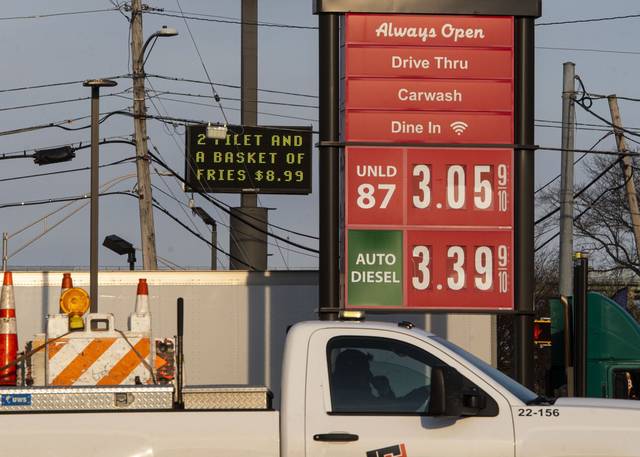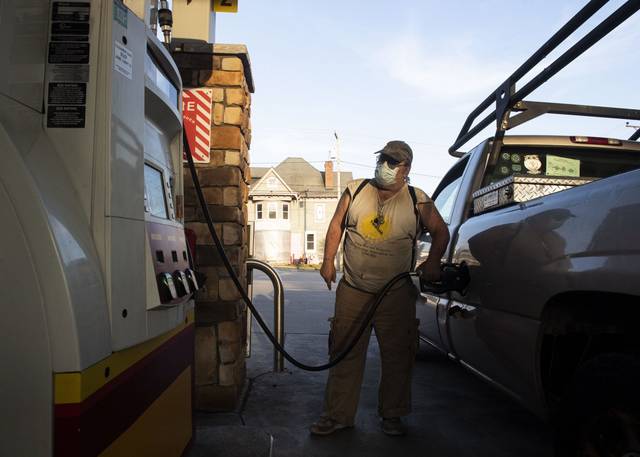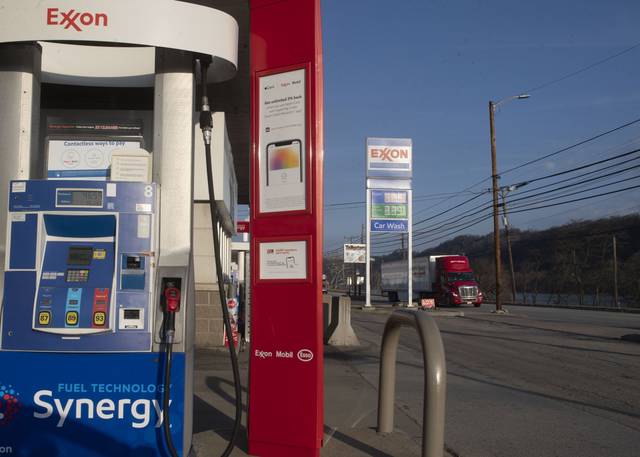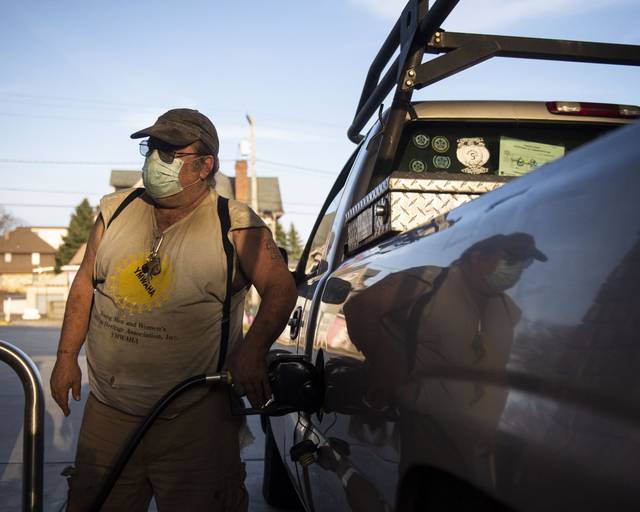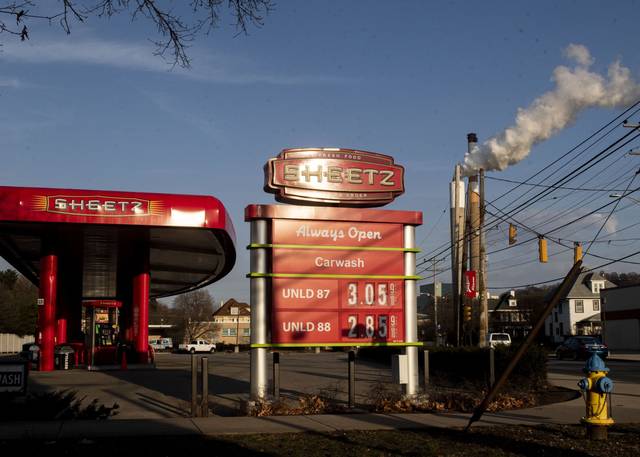Southwestern Pa. gas prices stabilizing; remain well above national average
After weeks of sharp price spikes, analysts say gasoline price increases in Southwestern Pennsylvania appear to be stabilizing.
Regular unleaded gasoline increased only a penny per gallon last week following increases of 25 cents per gallon here over the last month.
There were multiple factors behind the increases that drove the price of unleaded regular to $3.06 per gallon in the Pittsburgh region last week, or about 60 cents per gallon more than it was a year ago, according to experts.
“It’s a very complicated mixture of a variety of things,” said AAA East Central spokesman Jim Garrity.
Chief among the price drivers in recent months: supply and demand.
Patrick DeHaan, who follows the market as head of petroleum analysis for GasBuddy, said the dramatic price spikes come on the heels of growing optimism after a year of severe declines in market demand and production, when travel ground to a virtual halt during the pandemic shutdown.
That drove prices down. A GasBuddy survey from March 2020 found prices in Southwestern Pennsylvania averaged $2.27 per gallon, or about 80 cents less than they were last week.
As prices and demand slipped, producers here and in oil-producing nations across the world responded by cutting production in an effort to prop up plummeting prices.
“Last year, oil companies were losing billions of dollars and shedding thousands of jobs and, now that things are coming back, we’re seeing rising demand is significantly outpacing any increases in supply,” DeHaan said.
For the oil industry still reeling from memory of several days last year when the price of a barrel of crude oil tanked into negative numbers, production has yet to fully return even with today’s $65 per barrel prices.
And, while U.S. oil production appears poised to begin increasing, international players in the Middle East and freakish weather in the U.S. also are driving prices at the pump.
“Just last week, OPEC announced it was extending a production cut it made because demand was so low last year,” Garrity said.
That, coupled with the extreme cold in Texas — which took more than a quarter of U.S. refining capacity offline last month — contributed to a growing imbalance in the supply and demand equation that helped drive up the cost of crude oil and led to $3 per gallon prices here.
DeHaan said oil industry optimism for a comeback began to grow in November with the pending rollout of the coronavirus vaccines and continued into the new year as shots began to go into arms.
“In March, the vaccine has been living up to its promise and Americans have begun filling their tanks at almost pre-pandemic levels,” DeHaan said.
That, coupled with the stimulus bill putting money into the pockets of millions of Americans, could fuel pent-up demand for travel and encourage Americans to return to their love of the highway this summer despite higher prices.
DeHaan said a growing chorus on right-wing media blaming the Biden administration for increasing gas prices is misplaced.
“There’s been a lot finger-pointing since January,” DeHaan said. “Two major policies some people incorrectly said contributed to (rising prices) was that President Biden banned fracking and halted the Keystone Pipeline. The president didn’t ban fracking, he issued a 60-day moratorium on new drilling on federal land. When we return to pre-pandemic levels it may have some effect, but to talk about a moratorium on drilling is far too early. And the Keystone Pipeline is having no impact. We have more than enough pipeline capacity to ship crude. We don’t need another pipeline. The Keystone Pipeline was to offer capacity for the future.”
The start of the summer travel season, coupled with the introduction of summer grade fuel that costs more to produce, typically boosts prices at the tank a few cents per gallon. And this summer is not expected to be any exception . But Garrity and DeHaan said there is no indication prices will reach anywhere near the $4.11-per-gallon historic highs that held for several weeks in July and August of 2008.
Barring unforeseen events, DeHaan predicted $4 and $5 per gallon gasoline will be banished to some isolated stations in southern California, where such prices are not uncommon.
Even so, Pittsburgh-area gas prices, which varied from about $2.80 to $3.09 per gallon last week, are expected to remain higher than the national average, which held at about $2.86 per gallon last week. Garrity said both the region’s distance from its suppliers in Ohio and the state’s gas tax — 58.7 cents per gallon — combine to keep prices here among the highest in the state and above national averages.
Deb Erdley is a Tribune-Review staff writer. You can contact Deb at derdley@triblive.com.
Remove the ads from your TribLIVE reading experience but still support the journalists who create the content with TribLIVE Ad-Free.




